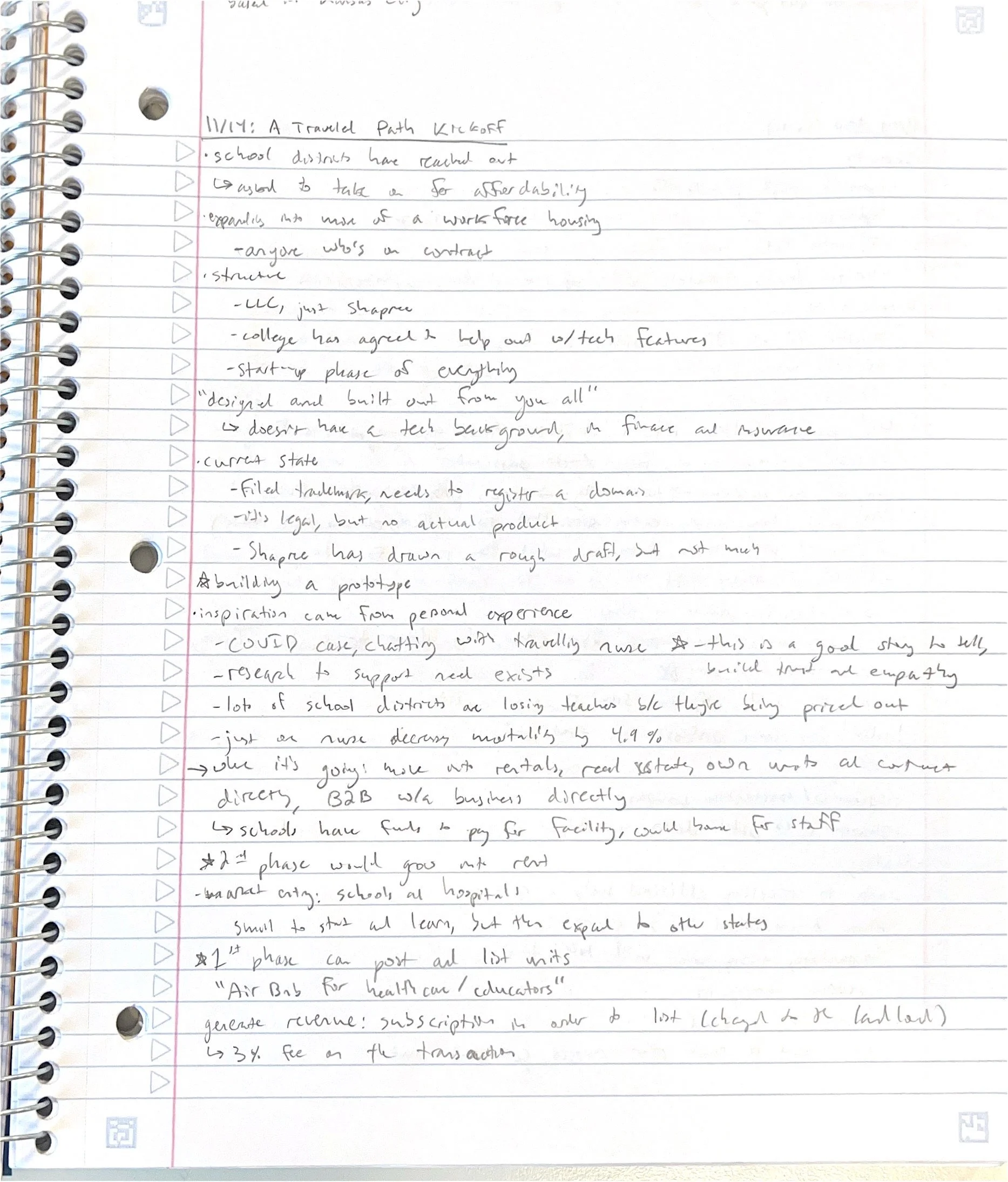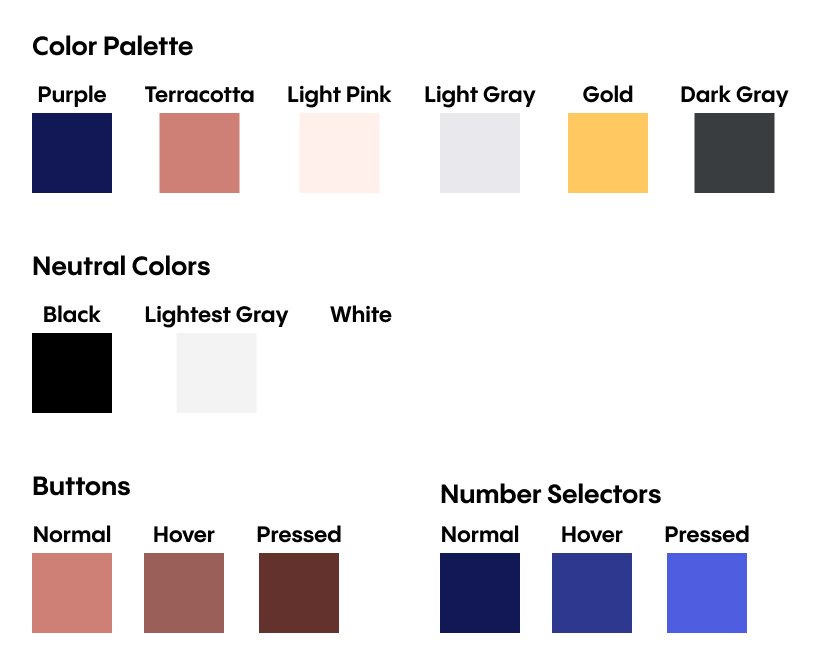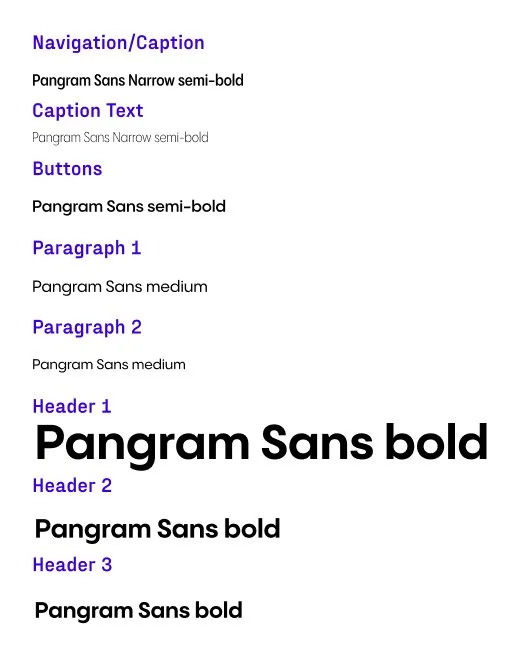A Traveled Path Homes
Overview
✴️ Impact Statement
Often, traveling contract workers, like medical professionals and teachers, find themselves in unfamiliar places and may be working in places where they will be priced out of affordable housing. A Traveled Path Homes (ATPH) aims to provide affordable, safe, and comfortable housing opportunities for these professionals, while also helping property owners keep their properties occupied. ATPH came to us with a vision but no product, and needed a proof of concept to show investors.
Our team researched and designed an interactive SaaS prototype for ATPH. My area of focus was on the property owner view of the platform.
🙎🏼♂️ My Roles
UX Researcher, UX/UI Designer
Stakeholder interview
Competitive analysis
Secondary research
User interviews
User flows
Task flows
Information architecture
Feature list
Kano analysis
Hand sketching
Wireframing
Interactive prototype
Usability testing
Iterative design
Pen and paper
Figma
Zoom
Google Sheets
🛠 Tools
📈 Methods
🧭 Exploring the Problem Space
This was a really exciting client to work with. They had lots of ideas, but nothing existed yet. In our client intake meeting, our client’s passion for her mission came across very strongly. This galvanized us to communicate that passion in the platform we built.
Our team had no prior experience with traveling professionals or property ownership, so we came in with a lot of questions. The biggest questions we sought to answer were:
What already exists in this space and how well does it address the unique needs of traveling professionals?
How can we create something that will address the needs of the primary users?
We conducted a competitive analysis on similar short-term rental housing options, and learned that there’s a significant gap in offerings for traveling professionals. Services like AirBnB, VRBO and Expedia are too broad and focus on vacationing, so they don’t adequately serve the contract-based niche needs of these traveling short-term employees. This validated the information that our client shared with us, and gave us richer data to start designing.
The Competition
Some of my notes from our client intake meetingThere are two main user groups for this platform that we focused on: traveling professionals and property owners. To support our secondary research, we conducted interviews with traveling nurses and educators, as well as property owners. Some key takeaways were:
Travel nurses often have 3-month long contracts far from home, expected to find their own housing. So, they need the option to book longer term stays without competing with short-term renters to avoid having to move around constantly.
Traveling professionals need a way to gauge the relative safety, cleanliness, and reputation of a property. Property owners need a way to gauge the reputation of the potential tenant.
The listing of basic creature comforts and amenities are sometimes the driving force behind a renter’s decision.
Understanding Our Users
🧊 The Add Property Iceberg
I tackled the add property section of the property owner flow. Going into this, I thought this would be the first thing I focused on, and would then contribute to other areas of the design. However, I would learn that this process was deeply involved and required lots of research and deep understanding to make an effective design.
I walked through the add property process on AirBnB and VRBO to understand what already existed. I learned that generally, adding a property had low friction and any extra details were available to users later. The challenge was to take what already worked well in this space, and make it unique to ATPH. I went back to our guiding questions. What was ATPH's unique value add? Connecting traveling professionals with longer-term temporary housing. With that in mind, I started designing.
What Already Exists?
To solve the add property problem, I needed to understand both owner and renter needs. I used the findings from our primary and secondary research as I started sketching. I wrote a list of the basic requirements for an add property process, that would serve both property owners and renters. I also conducted a Kano analysis for owner and renter features. I incorporated our findings into my designs.
Leveraging Research
I hand sketched an add property flow and translated those into low-fidelity digital wireframes. From here, our team reviewed the designs. It was so helpful to have a fresh perspective on a niche that I was really focused on. They uncovered some gaps and ideas to enhance the process. With this knowledge, I moved into mid-fidelity wireframes and prototyping.
Low Fidelity Sketches
🔑 Consistency is Key
When we approached this project, our team knew that we had to establish a consistent design language. We delegated the beginnings of this process to one of our team members, who created mood boards and some color guide options. From there, we discussed as a team and chose a color palette that communicated warmth and comfort.
The property card had to be consistent across both renter and owner side of things. So I collaborated with my teammate who built the renter side of the platform to really lock down what a property card would look like on our site. This informed a lot of our visual language. Another teammate created an icon set. Using both the established colors and the universal icons, I was ready to take my low-fidelity prototypes into our design system and pattern.
Collaborative Design
Our design system consists of fonts, colors, buttons, and various other elements. These are the building blocks of our design, and were created in collaboration with my team. View the full design system here.
Design System
A few elements of our design systemThe interactive prototype models the renter search functionality, saving and comparing properties, and messaging. It also models the owner dashboard and add property process. I designed the add property process. Some screens are shown below. View the full prototype here.
Interactive Prototype
⏩ Next Steps
I would next want to build out an edit property view for property owners. The basic building blocks are there with the add property process, so I would be excited to iterate on that further. I’d also want to build out the property owner dashboard with access to settings, profile view, and more.





